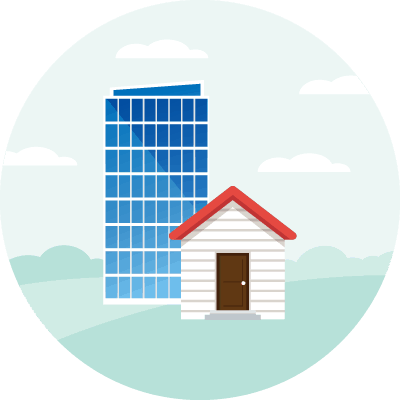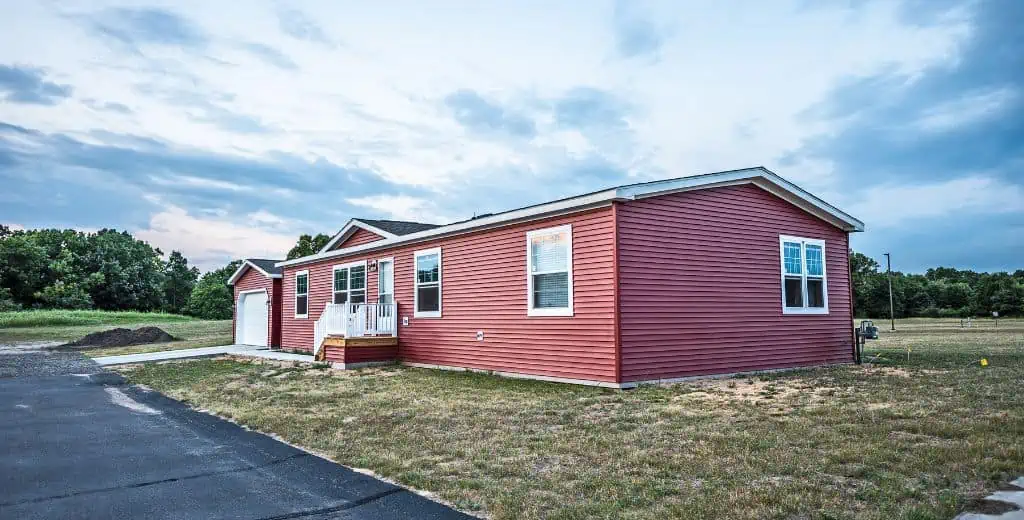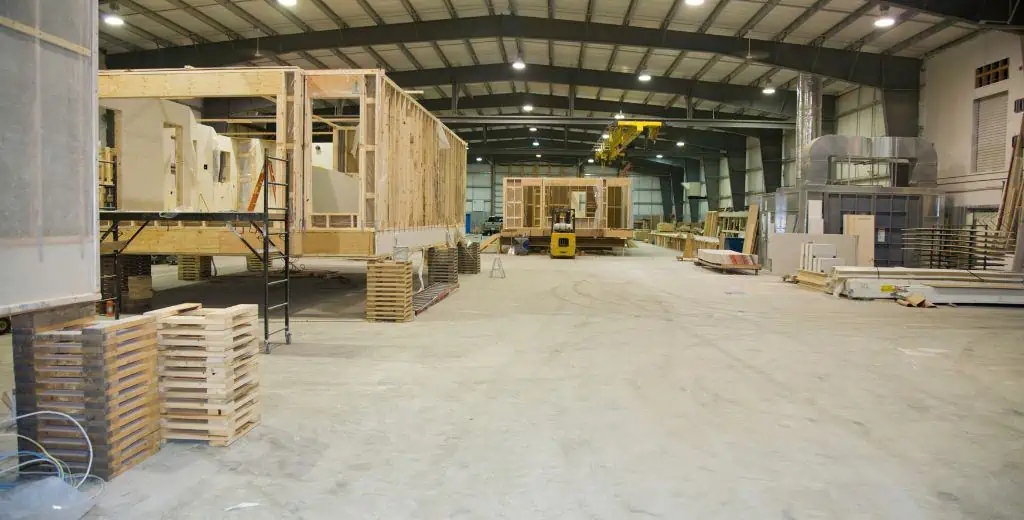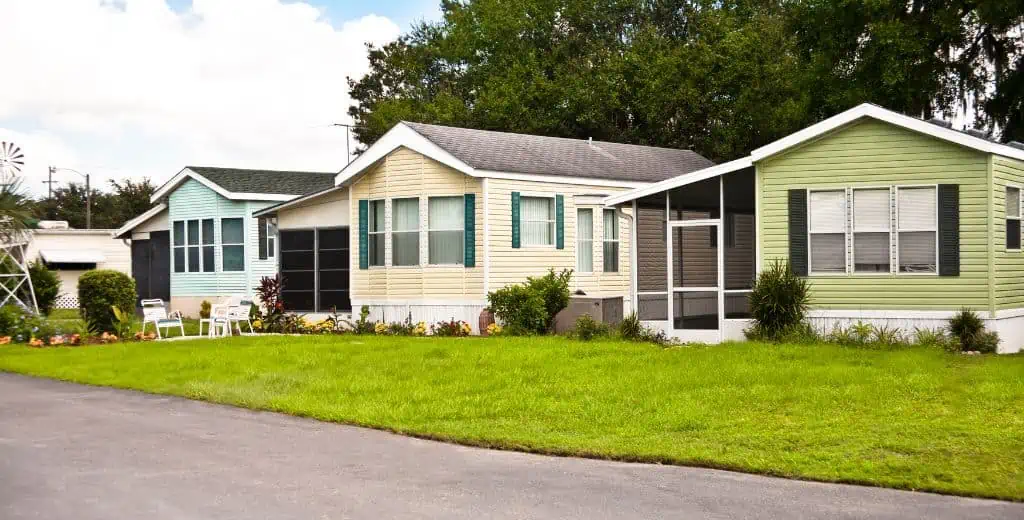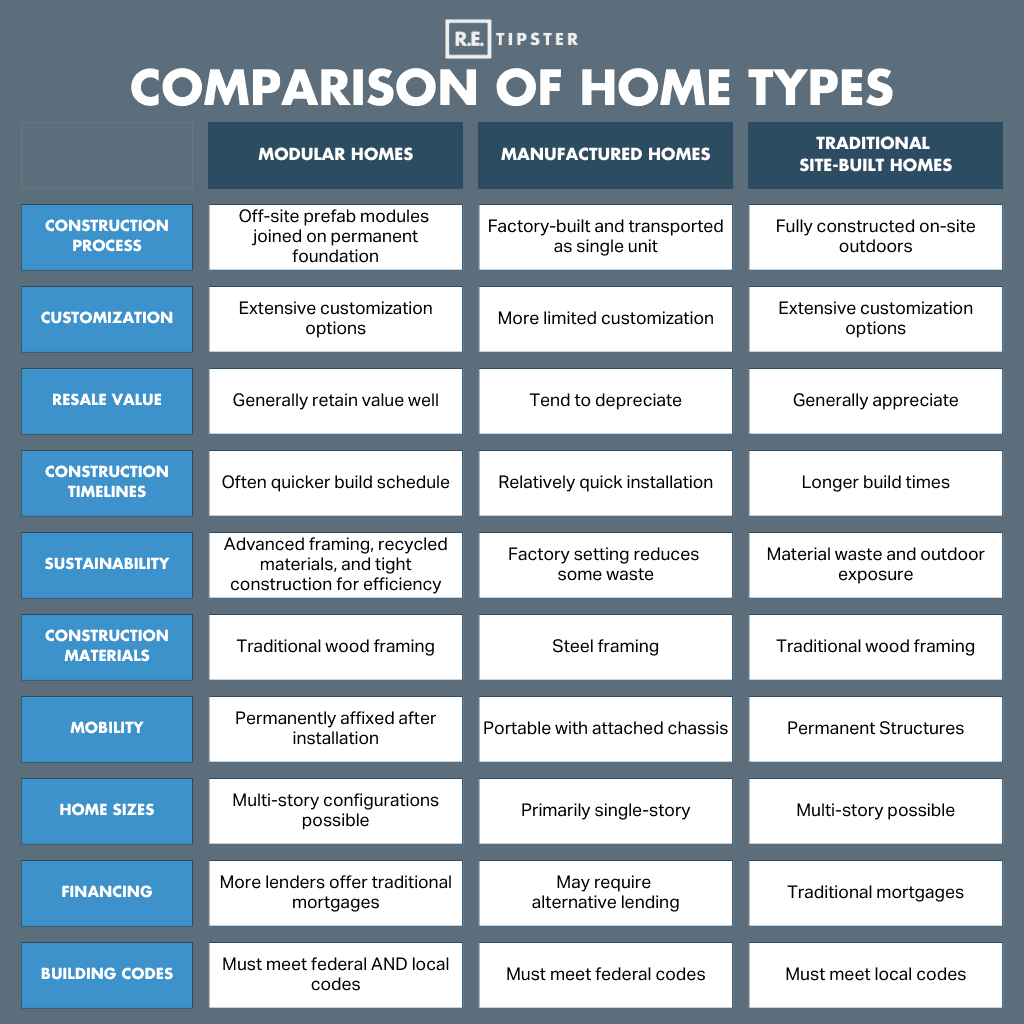What Are Manufactured Homes?
Shortcuts
- Manufactured homes are modern mobile homes, usually referring to prefabricated housing built after 1976.
- They are typically more affordable than traditionally built homes, sometimes costing only 20% of the latter.
- Three types of manufactured homes exist, based on the width of the chassis they sit on top of: single-wide (one chassis), double-wide, and triple-wide.
- In addition, homeowners can move into a manufactured home far faster.
- That said, special zoning restrictions exist for manufactured homes, and their resale market is a bit more nuanced than traditional homes due to their tendency to depreciate.
Understanding Manufactured Homes
A manufactured home (also known as a mobile home for those built before 1976) is a factory-built residence that offers a cost-effective alternative to traditional new builds. These prefab homes are constructed in a factory setting and then transported to a designated lot for installation. The average sale price of a manufactured home is significantly lower than that of traditional new homes—around a fifth of a traditional site-built home—making them an attractive option for many buyers.
Manufactured homes are not the same as mobile homes of the past; they can be permanent residences with sizes ranging from 1,400 to over 3,000 square feet. These homes can be customized and offer various floor plans to suit different needs and preferences.
The Department of Housing and Urban Development (HUD) regulates the standards for the construction of manufactured housing, which about 21 million Americans call home.
Types of Manufactured Homes
Like mobile homes, there are three primary categories of manufactured homes:
- Single-Wide: Typically around 18 feet wide, single-wides usually sit on a single chassis. They are generally easier to transport and set up.
- Double-Wide: Wider than single-wides, double-wides consist of two connected sections, each approximately 18 feet wide. They offer increased interior space and amenities.
- Triple-Wide: Rarest of the three types, triple-wides combine three 18-foot sections to create even larger living spaces.
How Much Does a Manufactured Home Cost?
A manufactured home’s price can vary based on factors such as size, design, condition, location, and customization. On average, single-wide homes cost the least, with a triple-wide design being the most expensive (sometimes over twice the cost of a single-wide).
These factors also play a role in determining the final cost of a manufactured home:
- Size and Floor Plan: Square footage, number of bedrooms and bathrooms, and overall layout contribute to value.
- Age and Condition: A well-maintained, newer manufactured home will generally be worth more than an older home in poor condition. Be aware that the resale market of a manufactured home is vastly different from that of a regular home because of its tendency to depreciate.
- Features and Upgrades: Updated finishes, high-end appliances, and other additions can increase a manufactured home’s value.
- Location: Manufactured homes within desirable communities or locations with favorable land ownership terms tend to be of greater value.
In addition, monthly housing expenses for a manufactured home are often lower than those for a traditional home. The smaller size of manufactured homes typically results in lower utility bills, reduced property taxes, and more affordable insurance rates. Additionally, maintenance costs for manufactured homes are often significantly lower.
Construction Process of Manufactured Homes
The construction process of manufactured homes involves several key steps:
- Foundation: Manufactured homes are set up on concrete blocks, metal piers, or other secure tie-downs at their permanent location. They are not meant to be mobile residences but are affixed to the ground for stability.
- Building Components: Skilled laborers in factory settings construct various home components, such as walls, roof sections, and other parts. These components are built-in modules that can be easily assembled on-site.
- Assembly: Walls are placed on the foundation, electrical wires and plumbing lines are installed, insulation and drywall are added, and the home is sealed. The home undergoes multiple inspections to ensure compliance with building codes and specifications.
- Transportation and Setup: Once construction is complete, the manufactured home is transported to its site and securely attached to ground anchors. Final touches are added before the home is ready for occupancy.
RELATED: 30 Roof Types and Styles (Examples and Illustrations Included)
Pros and Cons of Manufactured Homes
Pros
- Affordability: Manufactured homes are generally a more economical housing solution compared to traditional homes.
- Faster Move-In Time: Factory construction streamlines the building process, often making it quicker to move in. From placing an order to moving in, it could take approximately two to four months for someone to move into a manufactured home.
- Community Living: Manufactured home parks foster a sense of community and may offer amenities like pools or clubhouses. Note that manufactured home parks often operate similarly to homeowners associations (HOAs) in terms of setting rules and regulations for residents to follow. These rules can cover various aspects, such as pet policies, exterior maintenance requirements, parking regulations, and restrictions on home modifications like adding porches.
Cons
- Financing: Securing financing for manufactured homes can be more complex than traditional mortgages because manufactured homes are treated differently under banking regulations. They may also not qualify for conventional mortgages unless they are permanently affixed to land that a buyer owns.
- Depreciation: Manufactured homes may depreciate in value, unlike site-built homes that generally appreciate.
- Location Restrictions: Zoning regulations govern the placement of manufactured homes within municipal boundaries. Some communities restrict their placement, while others allow them under certain conditions, such as using a special type of zoning called a “floating zone.”
Frequently Asked Questions: Manufactured Homes
What is the difference between a manufactured home and a mobile home?
The difference between a manufactured home and a mobile home lies in the date of construction. Homes built before June 15, 1976 are considered mobile homes, while those built after that date are classified as manufactured homes. The HUD regulates mobile and manufactured homes.
In general usage, most people often refer to mobile homes as trailer homes. This term has recently fallen out of favor due to its derogatory nature.
Manufactured homes can also be contrasted with a modular home, which is another type of prefabricated dwelling. The main difference is that a modular home is affixed to a permanent foundation, while a manufactured home may or may not be permanently attached to land. Here’s a breakdown of how they compare to each other, with a traditionally built home as a reference.
What is the difference between a manufactured home and a travel trailer?
Manufactured homes are permanent residences designed for long-term living, while travel trailers are recreational vehicles intended for temporary stays. Manufactured homes are built to HUD standards for permanent housing, offering more space, amenities, and durability compared to travel trailers.
The RV Industry Association provides information on travel trailers and other recreational vehicles, emphasizing their portability and temporary nature. The RV industry is worth nearly $50 billion.
How do manufactured homes compare to traditional homes in terms of energy efficiency?
Manufactured homes have made significant strides in energy efficiency over the years. HUD mandates these homes be built to ENERGY STAR® standards, making them more energy-efficient than stick-built homes built to standard building codes. These homes feature thicker insulation in the ceilings, walls, and floors, as well as windows that insulate better and resist condensation.
The Department of Energy provides resources regarding energy-efficient manufactured homes, highlighting the benefits of these advancements.
